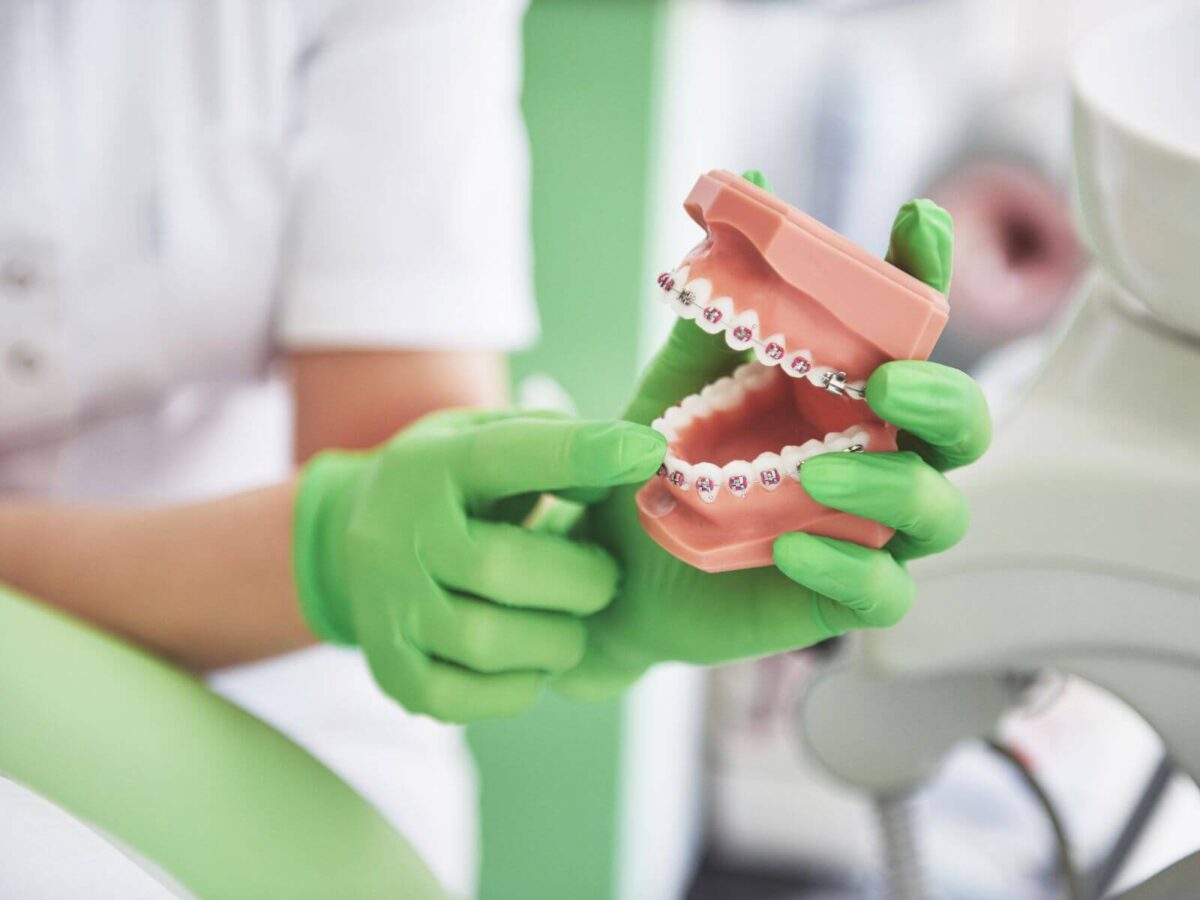Blog
Dental hygiene tips for healthy teeth & gums

Types Of Braces For Teeth: Choosing The Right Option
The kind of braces used on teeth is essential in contributing to desired results in orthodontic treatment. The decision to seek orthodontic intervention can influence one’s dental and overall health.
For this reason, it helps to understand the various opportunities that exist. This article will give a comprehensive and unbiased comparison of braces for teeth so that the reader can decide which option will suit them best.
Present-day progress in material and architectural designs has made several orthodontic braces available, each with special merits and demerits.
Some well-known types include regular metal braces, clear braces, lingual braces, and Invisalign braces. Because there are various types of braces, knowing their distinctive features, strengths, and weaknesses is critical for anyone who plans to have orthodontic treatment.
The Significance of Selecting the Appropriate Kind of Braces
Appropriate braces are essential for any individual who requires orthodontic treatment. Even though braces primarily correct misaligned teeth, overcrowding, and bite problems, patients can choose from various braces, including metal braces, ceramic braces, lingual braces, and clear aligners like Invisalign.
Each type has pros and cons, and many factors influence the best choice, including misalignment severity, the individual’s priorities, activity level, and financial resources. Therefore, it is advisable that before a specific type of braces is chosen, the individual consults an orthodontist with adequate experience to provide the appropriate advice.
Selecting the correct type of braces goes alongside efficient treatment and excellent comfort, appearance, and oral health.
Traditional Metal Braces
Conventional metal braces are highly recommended orthodontic solutions. They are made of stainless steel brackets and wires bonded to the teeth’ front surface.
Cons
- Oral Hygiene Challenges: Brushing and flossing become more complicated and time-consuming.
- Ceramic Braces
- Ceramic braces have clear or tooth-colored brackets, which make them less apparent than regular metal braces. They operate similarly, utilizing brackets and wires to straighten teeth progressively.
Pros
- Aesthetic Appeal: Less visible than metal braces, making them popular for adults.
- Durability: Resistant to staining and discoloration.
Comfort: It is more comfortable and causes less irritation to the gums and cheeks. - Effectiveness: It can be used to correct orthodontic issues.
- Cons
- Cost: Typically more expensive than metal braces.
Lingual Braces
Lingual braces are attached to the back of the teeth, making them invisible from the front. They use wires and brackets to correct alignment issues.
Pros
- Invisibility: Positioned behind the teeth, they are virtually invisible.
- Customization: Individually designed for each patient, ensuring a precise fit.
- Effectiveness: This treatment is versatile, and it can address most positioning disorders, such as alignment, crowding, and even bite problems.
- Speed: In some instances, they may also give a quicker onset of treatment effect.
Cons
- Discomfort: They may cause some initial inconvenience and problems with speech due to their placement.
- Cost: Costlier than traditional roofing systems because they are made to order and may require particular installation.
- Maintenance: Needs to clean and manage.
- Availability: Available in very few orthodontic practices.
Clear Aligners (Invisalign)
Invisible braces, like Invisalign, then use clear, transparent, and removable trays that move the teeth incrementally into the correct position. These trays are individualized, worn, and interchangeable for the next few weeks.
Pros
- Aesthetic Appeal: In terms of treatment intervention, it is almost undetectable.
- Convenience: Pulse pieces to be removed before eating, drinking, and drooling.
- Comfort: The wires and brackets are used to bump with other teeth, resulting in so much irritation.
- Efficiency: In most cases, treating clients with Invisalign aligners takes longer than treating them with regular braces.
Cons
- Compliance: Only 20-22 hours a day should be worn to kill all pathogens.
- Limitations: Contraindicated in cases of complicated orthodontic treatment.
- Cost: They may also be more expensive than traditional braces.
Adjustment Period: Usual temporary adjustments might be required for the first few days of using the aligners.
Self-Ligating Braces
Do not use elastic bands to hold the wire; use self-ligating braces with a unique self-ligation clip. Used correctly, this approach might decrease the duration of the treatment and make changes easier.
Pros
- Efficiency: However, the time required to complete treatment is shorter than that of regular braces.
- Convenience: It requires fewer appointments to adjust.
Hygiene: They are not as likely to have elastic bands, which makes them harder to keep clean. - Comfort: Less pain and fewer broken bracket cases.
Cons
- Cost: More than bracket and wire systems.
- Availability: Few orthodontists now focus their practice on this particular kind of treatment.
- Suitability: Not suitable for solving intricate problems associated with orthodontic treatment.
- Installation Time: More time is needed for initial installation and readjustment.
Things To Look At When Selecting Braces
Choosing the correct type of braces is a critical decision – more than that. It is a decision that may affect your oral health and personal satisfaction in life. Here are several factors you should consider:
1. Severity of Orthodontic Issues
The complexity of your problems is a primary factor in the choice of braces. Some types, such as traditional metal braces, can handle a broad range of orthodontic issues, from simple to complex. In contrast, options like Invisalign might be better suited for less complicated alignment issues.
2. Aesthetics
If appearance is a concern, there are invisible braces like ceramic or trays like Invisalign, and if you’re a teenager, those may be your best bet. However, let me remind you that they do not always fit for orthodontic issues.
3. Lifestyle
Your lifestyle can also determine your choice. Standard braces could be uncomfortable for someone physically active or participating in any form of contact sport since they’re highly likely to cause damage. This makes clear aligners that can be taken out while performing physical activities more appropriate.
4. Budget
The price factor is also an element of concern. Generally, metal brackets and bands are the cheapest, while the newest or the most popular choices, like lingual braces, ceramic braces, and clear dental aligners, are relatively expensive.
5. Maintenance and Care
As for braces, there are some native key points regarding the sort of metal brackets for teeth and the maintenance of each type. Unfortunately, some, such as Invisalign, need to be removed and rinsed, while normal braces could cause some difficulties in oral hygiene because food particles may get stuck between them.
Remember, the above factors are some of the general considerations, and the best braces for other factors will determine you. Thus, you should consult your orthodontist and make consultations before arriving at the decision.
Conclusion
Choosing between the braces to wear for the orthodontic treatment is a rigorous process that does not have to be complicated.
Currently, there is an array of braces, from metallic to self-ligating, clear, lingual, and even 3D, making it possible for everyone to find a suitable solution to fit his or her age, lifestyle, and pocket.
At Rockdale Family Dentist, we acknowledge that every patient is different and has unique requirements. We aim to assist you in finding the options among the existing types of braces that will be perfect for you.


